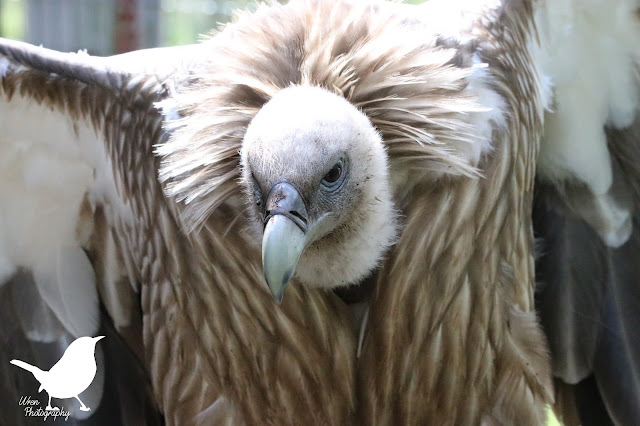The Griffon Vulture
For my second post I would like to ID and write about one of my favourite bird species, the Griffon vulture (Gyps fulvus). It is an old world vulture and is similar in appearance to the White Backed Vulture (Gyps africanus). An old world vulture is essentially a variety of species that are only found in Europe, Asia and Africa whilst new world vultures such as the Turkey vulture (Cathartes arua) are found in North and South America. It is interesting to note that old world vultures are not related to new world vultures and are in fact in the family Accipitridae which is home to eagles, buzzards, kites and hawks.
Size : 93 - 122 cm (37 - 48 inches) long with a 2.3-2.8 m (7.5 -9.2 foot) wingspan.
Ecology : Spain, Portugal, French Pyrenees, Isreal, Italy (only several), Croatia, Greece, Belgium and Holland.
Sexual dimorphism : Not visually but females tend to become heavier and larger.
Habitat : High altitudes in warm climates, rocky slopes and mountains.
Conservation Status : Least concern.
The first thing I noticed when going to photograph these birds and what won me over was their sheer size! I am a small person I will admit (5 foot 4 inches) but these birds standing tall are almost up to my shoulders at times and can be quite intimidating up close. They are also extremely heavy and are one of the largest birds of prey, whilst males are typically smaller both sexes range between 6.2-11.3 kg (14 - 24 lb) which is extremely heavy for a bird.
They are an exclusive feeder of carrion (dead meat) and often move in flocks, it is rare to see a single Griffon vulture. They establish nesting colonies in cliffs which give them a high sweep of the area for any dead prey. They also live a long time in captivity, although I have not had the privilege of seeing a Griffon vulture in the wild (a wish I want to fulfil) I did get up close in to the pen of 3 vultures at a rescue centre in Ireland. One of the Vultures there was brought to the shelter in 1986 making it at least 32 years old! The maximum recorded lifespan of a captive individual was 41.4 years. The last point I want to add that made me fall in love was their unique character, they are very very curious birds that were very keen to see if I was part of the menu (this wasn't in an aggressive way they just kept walking close and staring trying to understand what I was). They also walk in a hunched, rushed gait which makes them look like they're sneaking around.
Although they are considered stable in population lots of vultures (similar in all species) suffer from poisoning more and more frequently due to ingestion of poisoned vermin. It is very important to ensure these species do not drop in number as they are critical in disease control.
 |
| Female spreading her wings. |
Ecology : Spain, Portugal, French Pyrenees, Isreal, Italy (only several), Croatia, Greece, Belgium and Holland.
Sexual dimorphism : Not visually but females tend to become heavier and larger.
Habitat : High altitudes in warm climates, rocky slopes and mountains.
Conservation Status : Least concern.
The first thing I noticed when going to photograph these birds and what won me over was their sheer size! I am a small person I will admit (5 foot 4 inches) but these birds standing tall are almost up to my shoulders at times and can be quite intimidating up close. They are also extremely heavy and are one of the largest birds of prey, whilst males are typically smaller both sexes range between 6.2-11.3 kg (14 - 24 lb) which is extremely heavy for a bird.
They are an exclusive feeder of carrion (dead meat) and often move in flocks, it is rare to see a single Griffon vulture. They establish nesting colonies in cliffs which give them a high sweep of the area for any dead prey. They also live a long time in captivity, although I have not had the privilege of seeing a Griffon vulture in the wild (a wish I want to fulfil) I did get up close in to the pen of 3 vultures at a rescue centre in Ireland. One of the Vultures there was brought to the shelter in 1986 making it at least 32 years old! The maximum recorded lifespan of a captive individual was 41.4 years. The last point I want to add that made me fall in love was their unique character, they are very very curious birds that were very keen to see if I was part of the menu (this wasn't in an aggressive way they just kept walking close and staring trying to understand what I was). They also walk in a hunched, rushed gait which makes them look like they're sneaking around.
 |
| Side portrait of the beak |
 |
| A yummy (?) bit of cow for tea. |



Ewww!!! Glad my beef doesn't look like that!!! 🤢
ReplyDelete